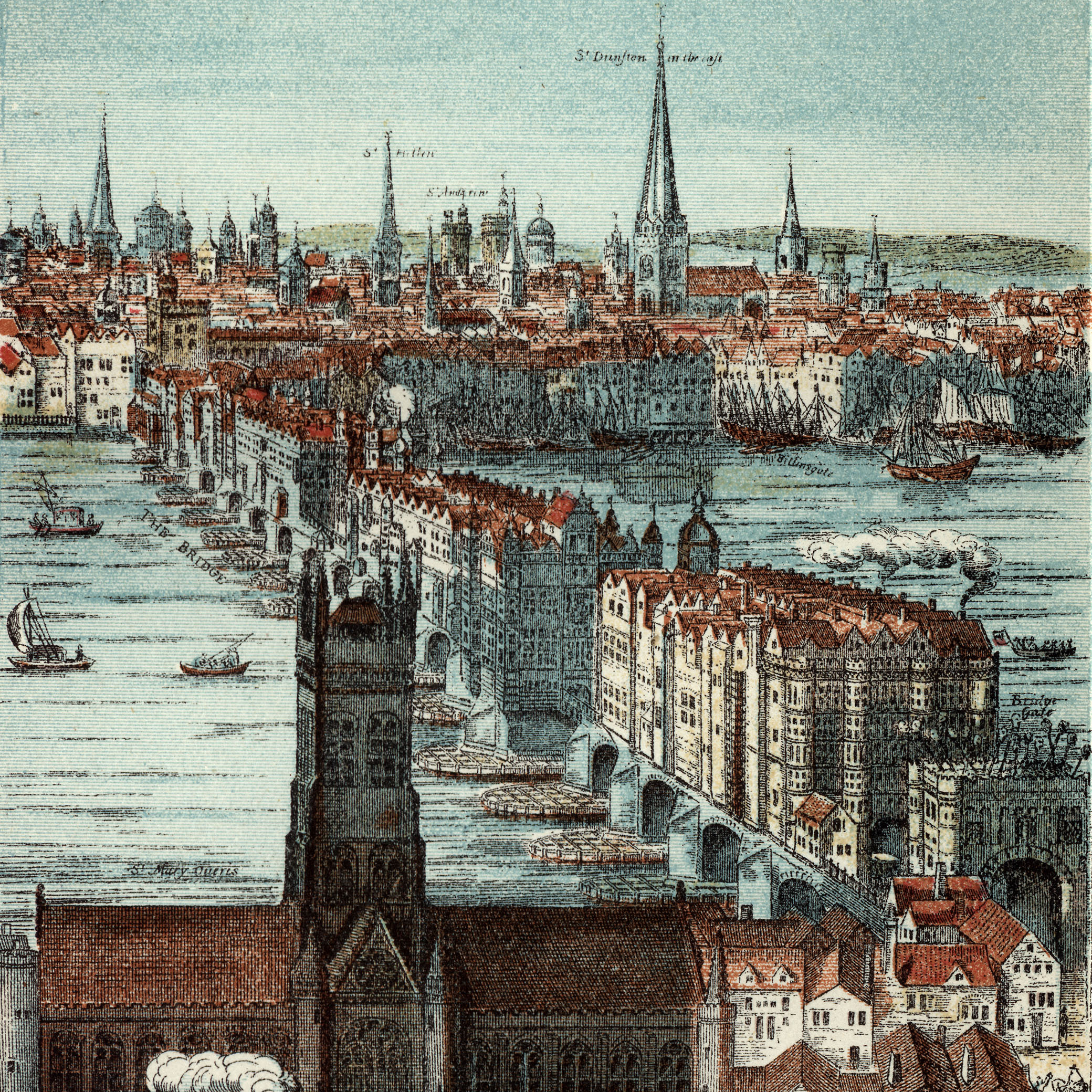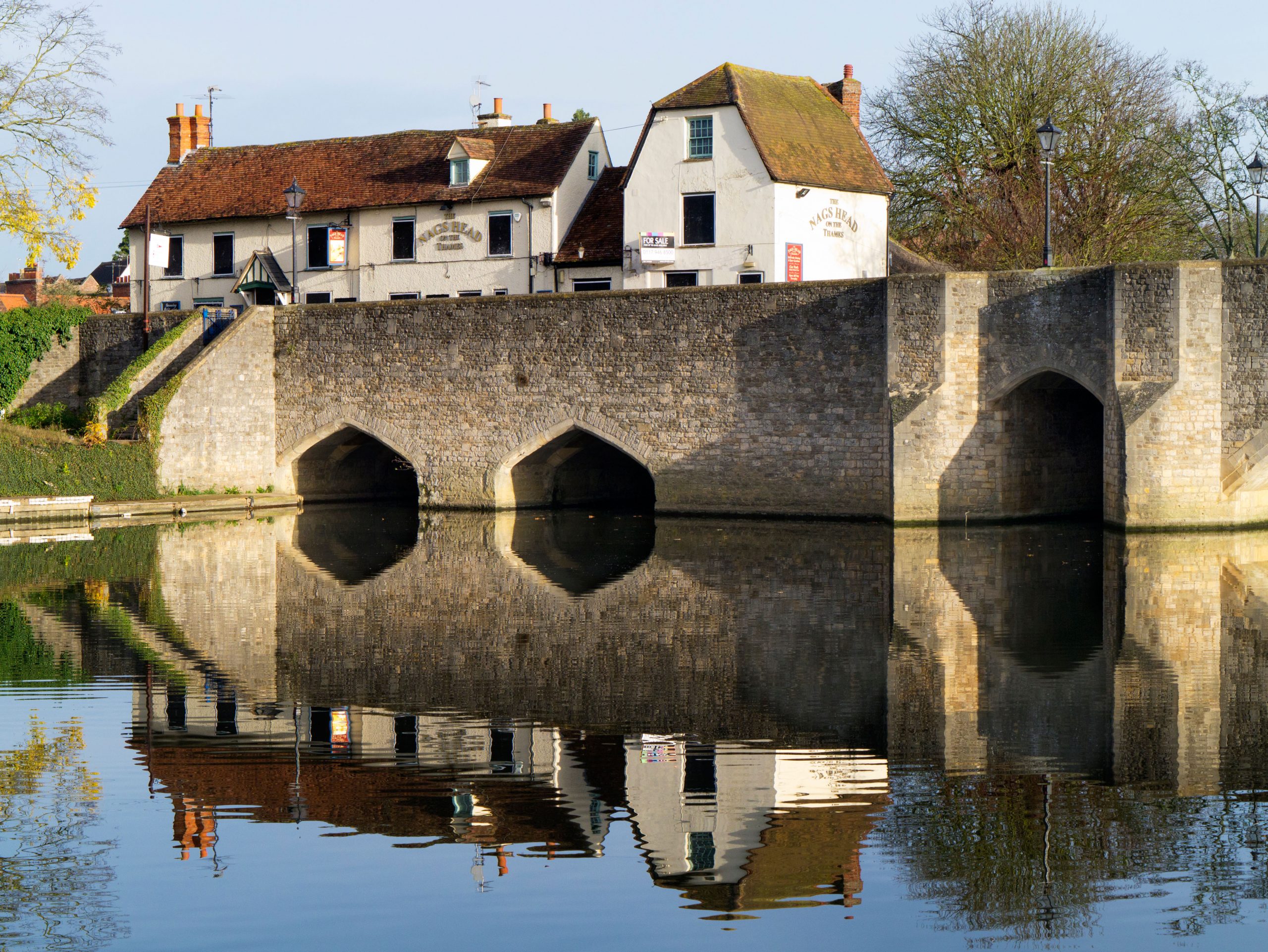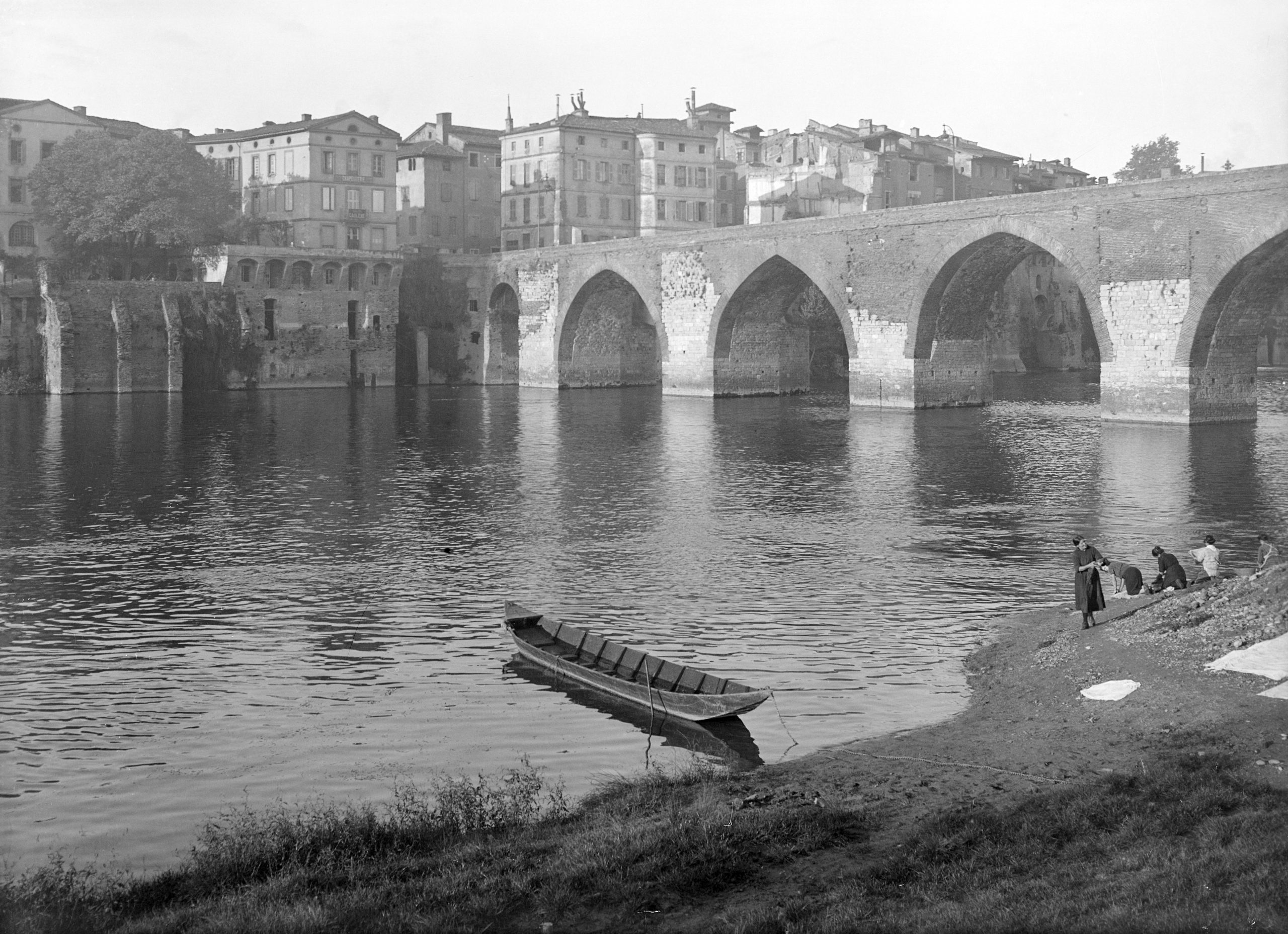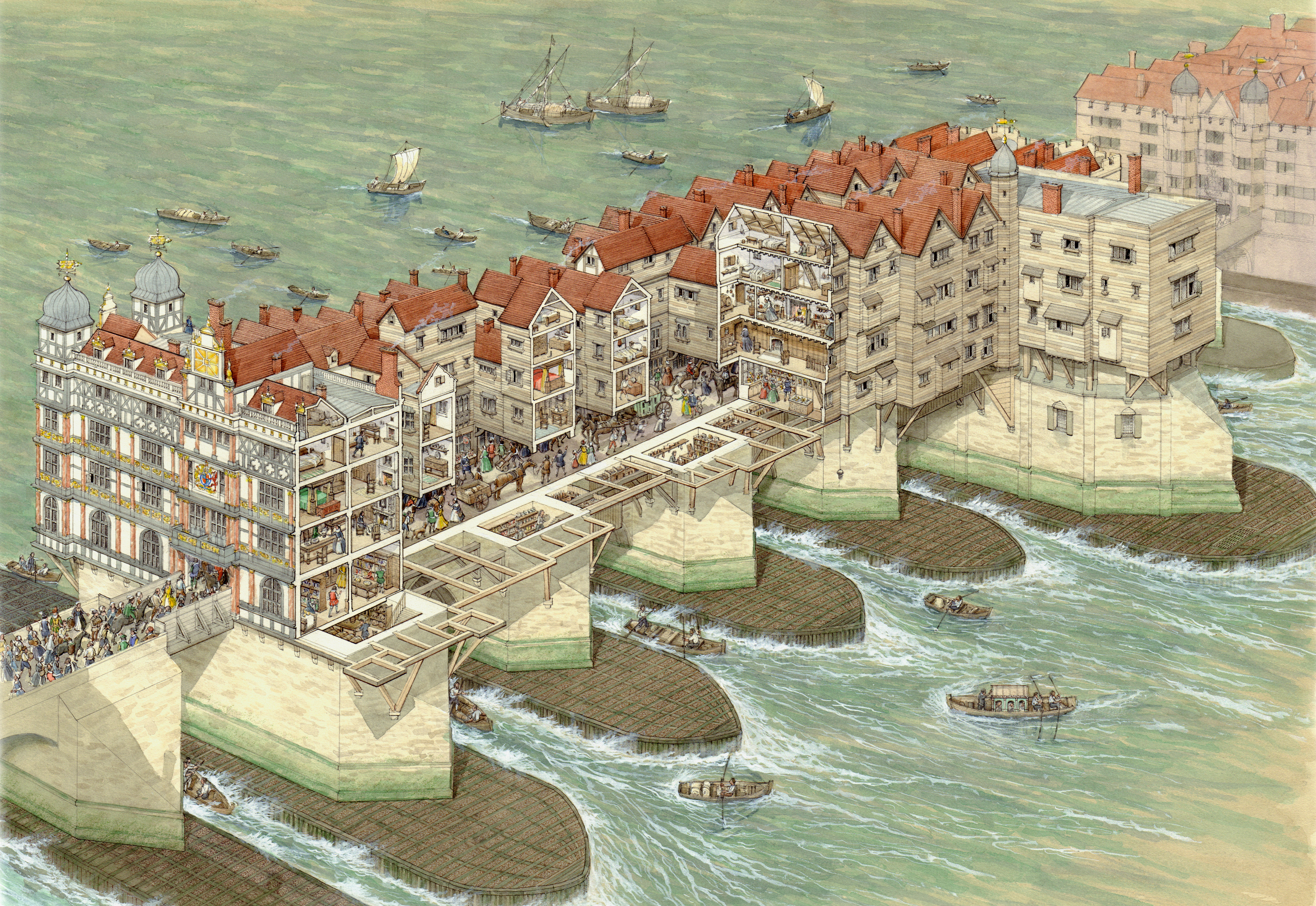The medieval engineering strokes of genius that led to the building of Old London Bridge
Medieval bridges were marvels of engineering, given the technology available at the time — and nowhere more so than in the case of London Bridge, where deep, tidal flows made construction incredibly challenging. David Harrison explains.


Every Tuesday, we look back in Country Life's architecture archive for a treasure of the past. Today, we examine a 2005 article describing the building of the original London Bridge, a remarkable feat of engineering given the technology available. The piece was written by David Harrison, author of The Bridges of Medieval England.
Despite our familiarity with bridges, their history has scarcely been studied. The most famous is Old London Bridge because, as the song tells us, it fell down. Engineers have often stressed that it was a clumsy structure with its piers resting on massive wooden platforms, creating a narrow, turbulent waterway, inferior to the works of the Romans and the Renaissance.Despite its failings, it was, in fact, a remarkable work of civil engineering. It was also utterly atypical.
How so? Well, most major medieval bridges ‘were built by skilled masons’, adds David, and around 200 of them are still standing. Many more lasted until the second half of the 18th century, only to be destroyed and rebuilt purely because they weren’t wide enough for two wagons to pass.

Their construction was carried out using ‘coffer dams’, temporary structures erected in the river which could be sealed off and drained, to allow the creation of a dry working space for laying foundations. It was a horrendous job, as David explains:
A poem on a 15th-century memorial in Abingdon gives us an insight into bridge construction in the town and at nearby Culham. Geoffrey Barbour, a merchant, provided the huge sum of 1,000 marks. In 1416, 300 men were at work. The foundations were a major problem:Then the strengthe of the streme astoned hem stronge... Ther loved hem a ladde was a water man longe He helpe stop the streme til the werke were a foreThe poem is probably describing the erection of a coffer dam in the riverbed from which water was removed with buckets, a long and gruelling job. At Albi, France, in 1408 it took several men, often working day and night, 12 days to empty one coffer dam.

That solution wouldn’t work for London, however:
Laying foundations at Abingdon or Albi was difficult enough but there were a few places where it was far harder, in particular where the river was deep and tidal. The leaky riverbed of the Thames at London was an additional problem. Here, coffer dams could not be used. Instead, at old London Bridge, piles were driven into the water to create pens standing proud of the river at low tide into which rubble was thrown. The piers were built on top of the pens, but because the pens were unstable they were surrounded by other pens filled with rubble, known as starlings.Construction took 33 years, from 1176 to 1209. A few other places required this type of construction, such as Rochester at the mouth of the Medway. Two long medieval bridges survive, a reminder of those now lost, at Barnstaple and Bideford. The latter, made famous by Charles Kingsley in Westward Ho!, has 24 arches and is more than 200m long.Old London Bridge undoubtedly had problems: it acted as a dam, with water rushing through the narrow openings, undermining the foundations. Yet it was a remarkable achievement, lasting with just two major collapses until the 19th century, when steam engines and other technical advances offered a better way of laying foundations at London.


The story of Old London Bridge, the iconic landmark which vanished from the capital's skyline
Important new discoveries illuminate the form and history of the houses that lined one of London’s most celebrated lost landmarks.
Sign up for the Country Life Newsletter
Exquisite houses, the beauty of Nature, and how to get the most from your life, straight to your inbox.
Country Life is unlike any other magazine: the only glossy weekly on the newsstand and the only magazine that has been guest-edited by HRH The King not once, but twice. It is a celebration of modern rural life and all its diverse joys and pleasures — that was first published in Queen Victoria's Diamond Jubilee year. Our eclectic mixture of witty and informative content — from the most up-to-date property news and commentary and a coveted glimpse inside some of the UK's best houses and gardens, to gardening, the arts and interior design, written by experts in their field — still cannot be found in print or online, anywhere else.
-
 Some of the finest landscapes in the North of England with a 12-bedroom home attached
Some of the finest landscapes in the North of England with a 12-bedroom home attachedUpper House in Derbyshire shows why the Kinder landscape was worth fighting for.
By James Fisher
-
 The Great Gatsby, pugs and the Mitford sisters: Country Life Quiz of the Day, April 16, 2025
The Great Gatsby, pugs and the Mitford sisters: Country Life Quiz of the Day, April 16, 2025Wednesday's quiz tests your knowledge on literature, National Parks and weird body parts.
By Rosie Paterson